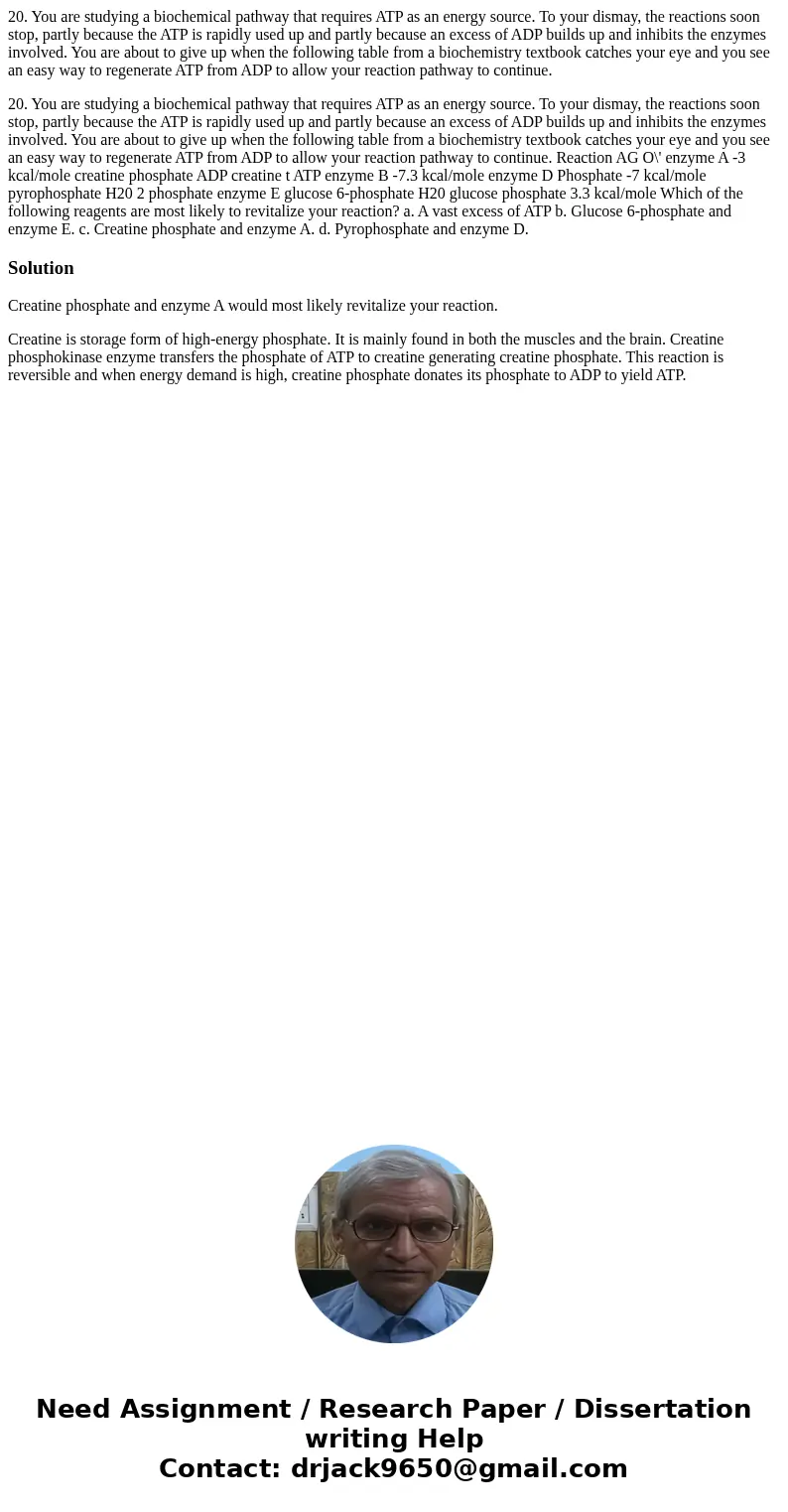20 You are studying a biochemical pathway that requires ATP
20. You are studying a biochemical pathway that requires ATP as an energy source. To your dismay, the reactions soon stop, partly because the ATP is rapidly used up and partly because an excess of ADP builds up and inhibits the enzymes involved. You are about to give up when the following table from a biochemistry textbook catches your eye and you see an easy way to regenerate ATP from ADP to allow your reaction pathway to continue.
20. You are studying a biochemical pathway that requires ATP as an energy source. To your dismay, the reactions soon stop, partly because the ATP is rapidly used up and partly because an excess of ADP builds up and inhibits the enzymes involved. You are about to give up when the following table from a biochemistry textbook catches your eye and you see an easy way to regenerate ATP from ADP to allow your reaction pathway to continue. Reaction AG O\' enzyme A -3 kcal/mole creatine phosphate ADP creatine t ATP enzyme B -7.3 kcal/mole enzyme D Phosphate -7 kcal/mole pyrophosphate H20 2 phosphate enzyme E glucose 6-phosphate H20 glucose phosphate 3.3 kcal/mole Which of the following reagents are most likely to revitalize your reaction? a. A vast excess of ATP b. Glucose 6-phosphate and enzyme E. c. Creatine phosphate and enzyme A. d. Pyrophosphate and enzyme D.Solution
Creatine phosphate and enzyme A would most likely revitalize your reaction.
Creatine is storage form of high-energy phosphate. It is mainly found in both the muscles and the brain. Creatine phosphokinase enzyme transfers the phosphate of ATP to creatine generating creatine phosphate. This reaction is reversible and when energy demand is high, creatine phosphate donates its phosphate to ADP to yield ATP.

 Homework Sourse
Homework Sourse